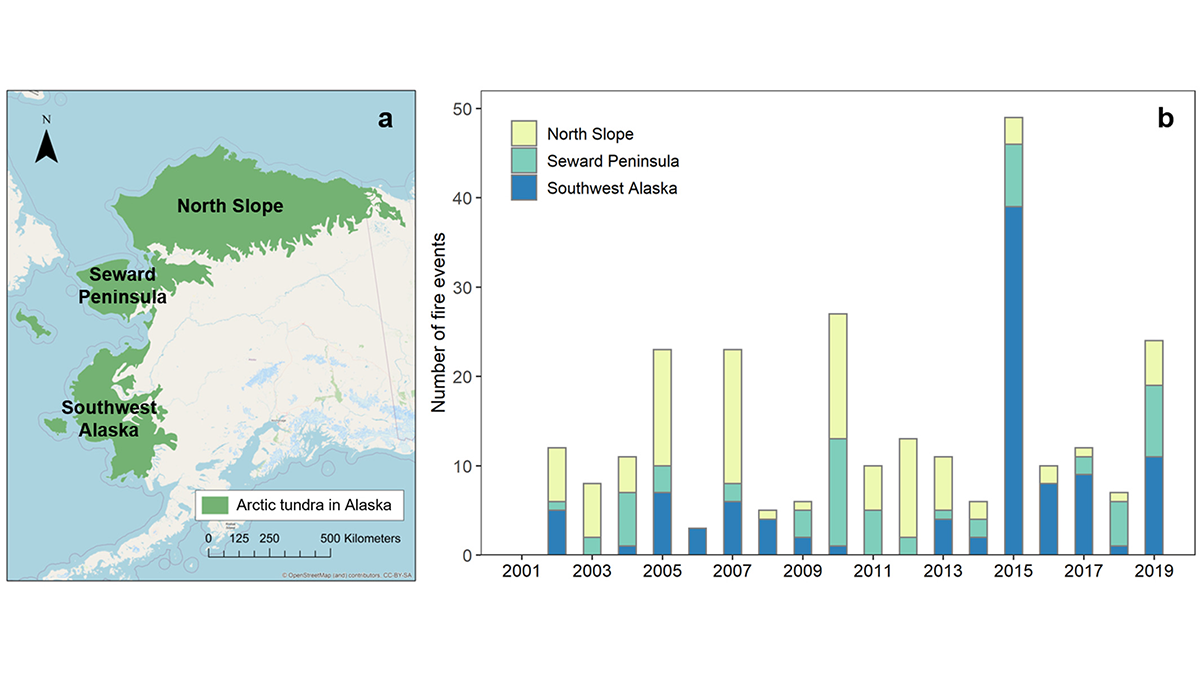Source: Geophysical Research Letters
Editors’ Highlights are summaries of recent papers by AGU’s journal editors.
Arctic tundra wildfires have important implications for ecosystems and regional and global climate. The driving mechanisms of wildfire occurrence remain poorly understood, despite the increasing occurrence of this new consequence of climate change in the Arctic.
He et al. [2022] address environmental and biological factors that contribute to the changing fire regime in three Alaskan tundra regions. By using a new approach that combines statistical and physical modeling, they estimate likelihoods of the various factors that can possibly contribute to the tundra fire occurrence. They identify cloud-to-ground lightning fire as the most dominant controller. This basic science research also has the potential to contribute new methodologies for fire monitoring and forecasting in data-scarce Arctic regions.
Citation: He, J., Loboda, T. V., Chen, D., & French, N. H. F. (2022). Cloud-to-ground lightning and near-surface fire weather control wildfire occurrence in Arctic tundra. Geophysical Research Letters, 49, e2021GL096814. https://doi.org/10.1029/2021GL096814
—Valeriy Ivanov, Editor, Geophysical Research Letters

